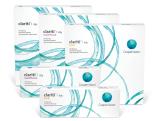
Whether you’re attending a wedding, going on vacation, or are hitting the ski slopes, you may have the option to leave your glasses behind. For most people, contact lenses are available for occasional wear.
How to Obtain Occasional Wear Lenses
To get lenses for special occasions, you’ll need a prescription from your eye care practitioner. Colored and costume contacts are sometimes available online and at street fairs. Steer clear, or you may end up with a serious eye complication. Always purchase your lenses from a reseller that requires you to provide a copy of your existing prescription or that will verify your existing prescription with your eye care professional.
You also should never borrow a friend’s contact lenses for a special event or occasion—even if they’re brand new. Your contact lenses need to be selected based on the precise size and shape of your eye.
Here’s another tip: make your appointment at least 2 weeks before the event to ensure that the lenses you need are in stock and will work well when you need them to.
What Lenses Are Best for Occasional Wear
Tell your eye care doctor a little bit about the occasion so that the right type of lenses can be chosen for you. For example, if you’re headed somewhere sunny and just don’t want to invest in prescription sunglasses, a daily disposable will give you the freedom to wear the lenses once, then throw them away. Trips abroad also are especially well suited to daily disposables since you don’t have to worry about bringing solutions. Silicone hydrogel lenses, such as clariti® 1 day come in a huge range of parameters to match most prescription needs, and you can take comfort in the fact that they are made of the healthiest lens material.*
MyDay® 1 day contact lenses are another great occasional wear contact lens option because the lens is wonderfully soft— yet easy to insert and remove.
If you’re still unsure what kind of lens is right for you, take this quiz.
* With higher oxygen permeability than hydrogel materials, silicone hydrogel contact lenses minimize or eliminate hypoxia-related signs and symptoms during lens wear.
Nothing in this blog post is to be construed as medical advice, nor is it intended to replace the recommendations of a medical professional. For specific questions, please see your eye care practitioner.






